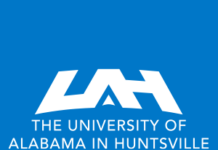 The American Bar Association recently released data on bar passage rates of graduates of ABA approved law schools. Nationwide, 36,400 students graduated from U.S. law schools in 2016. Of these 34,762 took bar examinations. Some 30,789 law school graduates in 2016 had passed a state bar examination within two years of their graduation. Thus, 88.6 percent of all 2016 law school graduates passed bar exams within two years.
The American Bar Association recently released data on bar passage rates of graduates of ABA approved law schools. Nationwide, 36,400 students graduated from U.S. law schools in 2016. Of these 34,762 took bar examinations. Some 30,789 law school graduates in 2016 had passed a state bar examination within two years of their graduation. Thus, 88.6 percent of all 2016 law school graduates passed bar exams within two years.
At four law schools, every 2016 graduate had passed a bar examination by 2018. These law schools were at the University of Chicago, Concordia Law School, the University of Wisconsin, and Yale University.
None of the six law schools at historically Black universities had a bar passage rate that exceeded the national average. The highest bar passage rate at a historically Black law school was at the Southern University Law Center in Baton Rouge, Louisiana, where the bar passage rate was 85.3 percent. This is just below the national average.
At the law school at Texas Southern University in Houston, 118 of the 141 law school graduates in 2016 had passed a bar examination by 2018. This produced a bar passage rate of 83.7 percent. The law school at North Carolina Central University in Durham had a bar passage rate of 80.3 percent.
Nearly 76 percent of 2016 graduates of the Florida A&M University School of Law had passed the bar by 2018. The bar passage rate at the University of the District of Columbia law school was 71.4 percent.
Of the 136 graduates of the Howard University School of Law in Washington, D.C., only 53 had passed a bar examination by 2018. This was a bar passage rate of 54.6 percent. Only one law school in the 50 states had a lower bar passage rate.
However, this figure simply may be an aberration. Nearly 73 percent of the 2015 graduates of Howard Law School passed the bar examination within two years. And most encouraging is the fact that 77 percent of 2017 Howard Law School graduates passed the bar examination on their first attempt.











